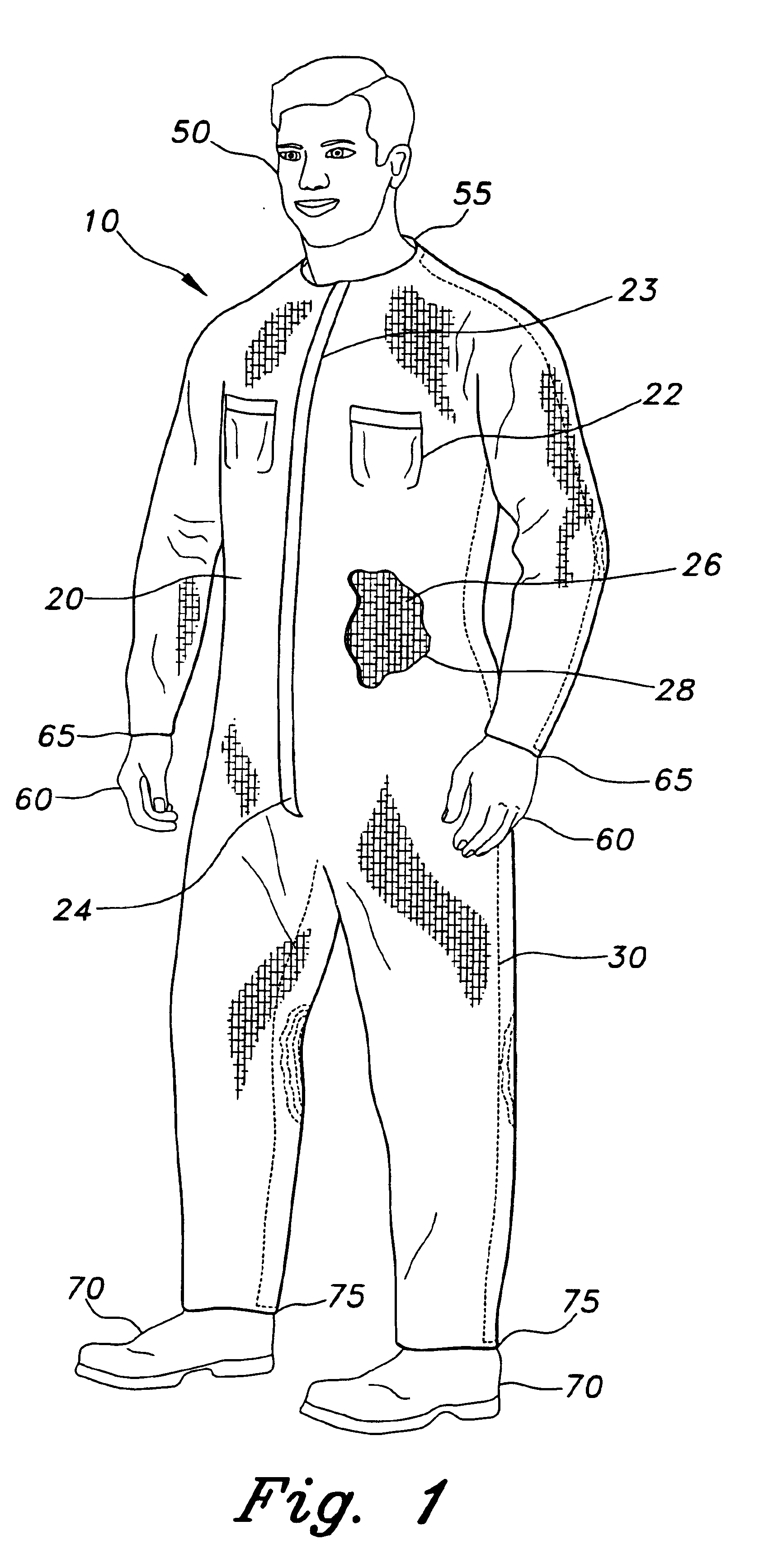Protective coverall for electrical utility workers
a technology for electrical utility workers and coveralls, applied in the field of protective clothing, can solve the problems of unprotected rear half of the body, no protection from direct contact with an electrical source, and ever present fire and electrocution risks,
- Summary
- Abstract
- Description
- Claims
- Application Information
AI Technical Summary
Benefits of technology
Problems solved by technology
Method used
Image
Examples
Embodiment Construction
The present invention is a protective coverall, designated generally as 10 in the drawings. Referring to FIG. 1, the protective coverall 10 is a loose-fitting one-piece work garment worn to protect the clothes and the body of the wearer that features electrical insulation designed to protect the rear half of the person from direct contact with a live electrical source up to 600 volts, and made with fire-retardant fabric throughout in order to shield the wearer from the harmful effects of fire and other thermal hazards.
Referring to FIG. 1, the protective coverall 10 is a loose-fitting, one-piece garment. The protective coverall 10 has a front half 20 and a rear half 30 that are joined by stitching. The protective coverall 10 envelops the arms, legs, and torso region of the wearer. In accordance, the protective coverall 10 has openings 55,65,75 that respectively allow the head / neck 50, hands 60, and feet 70 of the wearer to exit, thereby leaving those body components uncovered by the ...
PUM
 Login to View More
Login to View More Abstract
Description
Claims
Application Information
 Login to View More
Login to View More - R&D
- Intellectual Property
- Life Sciences
- Materials
- Tech Scout
- Unparalleled Data Quality
- Higher Quality Content
- 60% Fewer Hallucinations
Browse by: Latest US Patents, China's latest patents, Technical Efficacy Thesaurus, Application Domain, Technology Topic, Popular Technical Reports.
© 2025 PatSnap. All rights reserved.Legal|Privacy policy|Modern Slavery Act Transparency Statement|Sitemap|About US| Contact US: help@patsnap.com



